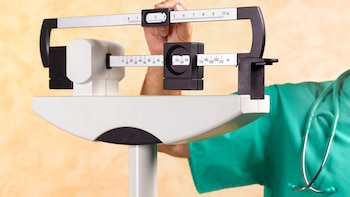







He Body Mass Index (BMI) was historically one of the most used tools to measure obesity globally. His formula, which relates a person’s weight to his height, served as a standard for diagnosing obesity at an epidemiological level.
However, when it comes to individual evaluation, BMI has important limitations, as published on several occasions. Infobae.
Consulted by this means, the doctor who is a member of the Obesity and Bariatric Surgery working groups of the Argentine Nutrition Society (SAN) and director of postgraduate studies at Favaloro University Ana Cappelletti (MN 76523) considered that “the BMI It is not an adequate indicator to predict the risk of comorbidities. This is because does not take into account critical factors such as the amount and distribution of body fat, key aspects that directly influence a person’s health.”
BMI can be misleadingsince it measures weight in relation to height without differentiating between muscle mass and fat. This is one of the reasons why people with large muscle mass, such as athletes, can be incorrectly classified as “obese” when in reality they have very little body fat. For this reason, Cappelletti stressed the need to use other more precise measurements to assess risks to the health of individuals.

In this sense, in recent years, the idea that abdominal circumference is a better indicator of health risks related to obesity has gained ground. Especially in terms of cardiovascular and metabolic diseases.
This measure more accurately reflects visceral fatwhich is the one that surrounds the internal organs and is closely linked to serious health problems.
A study published by Journal of the American Heart Associationthe specialized magazine of the American Heart Societyrevealed that people with a elevated abdominal circumference they have a 163% increased risk of developing heart disease, compared to those with normal values. Even those with a moderate index experience an increased risk of 61%.

In contrast, experts agree that BMI completely ignores where fat is distributed in the body.
The work directed by the doctor Yun Qianfrom the Wuxi Center for Disease Control and Prevention in China, showed that measurements focused on abdominal circumference could offer more accurate predictions of heart diseasestroke and other obesity-related disorders.

Proper waist measurement is key to obtaining accurate estimates of health risk.
For this, Cappelletti recommended that the circumference be measured at the midpoint between the lower border of the ribs and the iliac crest (hip bone). “Often, this point coincides with the location of the navel, except in cases of pendulous abdomen, where the fat moves downward,” said the nutritionist, who highlighted that “this measurement, and not the so-called ‘dressmaker’s waist’ ( measured at the narrowest part of the torso), is the one recommended by the World Health Organization (WHO) for evaluate the risks associated with visceral fat”.
The general recommendation is to keep the waist circumference at half the height of the person. Exceeding this ratio considerably increases the risk of suffering from diseases such as hypertension, type 2 diabetes and cardiovascular diseases.

Due to the deficiencies of the BMI, it was proposed new metrics to better evaluate the distribution of body fat.
One of them is the Body Roundness Index (BRI), also known as Abdominal Circumference Index (AQI)which takes into account both the waist circumference and the person’s height to provide a clearer picture of abdominal fat and the associated mortality risk.
A study published in Jama Network which included more than 32,000 American adults, found that LBBB has a U-shaped association with all-cause mortality: Both low and high ICA levels are linked to increased risk of death.
Between 1999 and 2018, the average BRI increased from 4.80 to 5.62, which shows an increase in visceral obesity in the population. The researchers suggest that this index could become a non-invasive screening tool to predict mortality risk and facilitate early intervention in those at highest risk.

The relationship between visceral fat and heart disease was confirmed by multiple studies, since this Fat generates chronic inflammation which, in the long term, can damage the cardiovascular system and other organs.
The study led by Qian showed that people with an increasing abdominal circumference over time have a significantly increased risk of developing heart diseaseeven when other risk factors, such as blood pressure, blood sugar and cholesterol levels, are controlled.
This finding reinforces the importance of monitor waist circumference over time, not only as a reflection of visible body fat, but as a crucial indicator of visceral fat and its impact on long-term health.

The limitations of BMI As an individual obesity assessment tool, it promoted the development of more precise measurements such as abdominal circumference and the Abdominal Circumference Index. Both metrics, by focusing on visceral fat, offer a more reliable assessment of health risks associated with excess weight, especially with regard to cardiovascular diseases.
Recent studies highlight the need to adopt these new approaches in clinical practice to improve early detection and reduce obesity-related mortality.
In closing, Cappelletti emphasized that “some indices, which may be valid for population studies and are necessary to generate statistics, are not always valid at the individual level.” “body weight as a diagnostic measure or treatment objective It is not what matters most to evaluate the comprehensive health of people and their quality of life,” he concluded.
